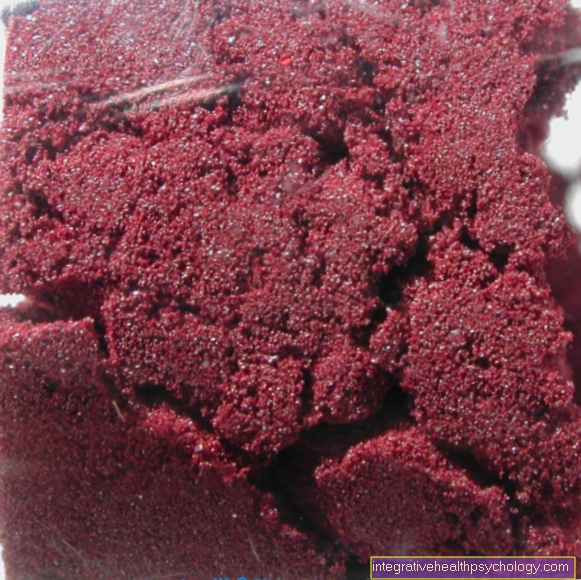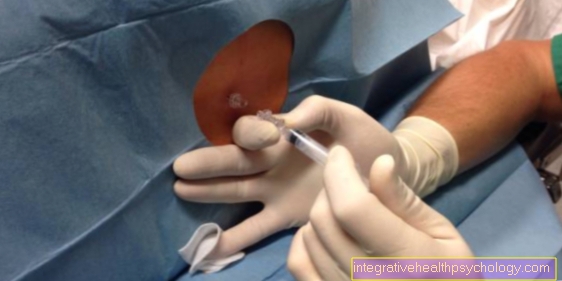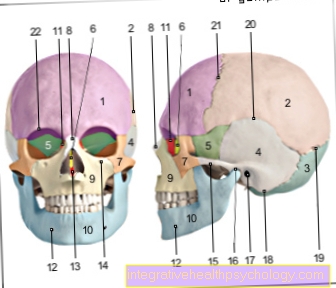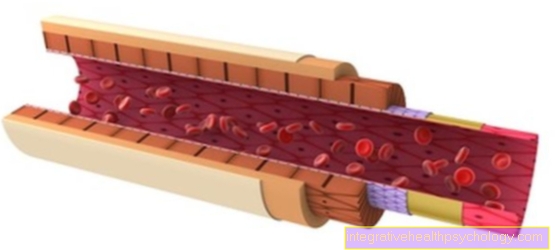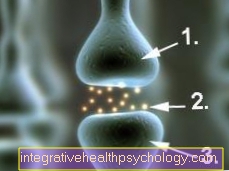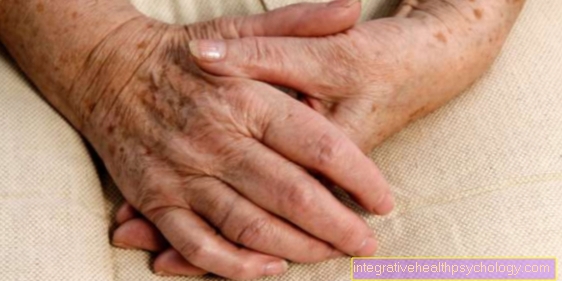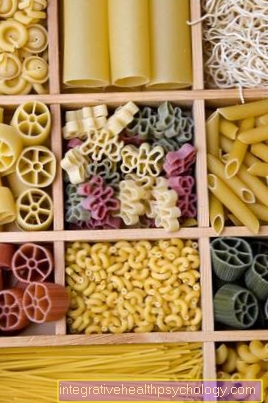Symptoms of intestinal polyps
Symptoms associated with colon polyps

Most colon polyps do not cause any discomfort. If the polyps are very large, they can also prevent the intestinal contents from passing through, causing constipation (Constipation) and cause pain. This can lead to blood in the stool or, in rare cases, colic.
Read more about: Blood in the stool - these are the causes!
pathology
Mostly one finds Colon polyps in the last section of the Intestines the rectum. Colon polyps can occur in a single place, sporadically in a few places in the colon, or as a so-called Polyposis Syndrome accumulate throughout the colon (> 100 polyps throughout the colon). These syndromes are hereditary, so a large number of polyps in the intestine can occur even in young patients. The following polyposis syndromes are known:
- Familial juvenile polyposis
- Peutz-Jeghers Syndrome
- Cowden Syndrome
- Familial adenomatous polyposis = FAP
Removed polyps are always histologically (Under the microscope) because it can be used to determine how dangerous the polyp was or what risk still exists. There are different histological types of colon polyps, which have a different risk of degeneration:
Inflammatory and hyperplastic polyps do not have an increased risk of cancer.
Hamartomas have a slightly increased risk of cancer.
At Adenomas there is an increased risk of cancer of up to 40% depending on the subtype.
This form of cancer development is also known as Adenoma-carcinoma sequence. This means that over time an existing adenoma will develop into a carcinoma - that is, Colon cancer can develop.Familial adenomatous polyposis has a cancer risk of over 90%, so the colon must be removed (Colectomy) and a check-up every 6 months.
Even with intestinal polyps without cancer risk is a regular one Colonoscopy useful for checking. The aim is to determine whether the area where the colon polyp was removed still looks normal and whether new polyps may have grown in other areas.



